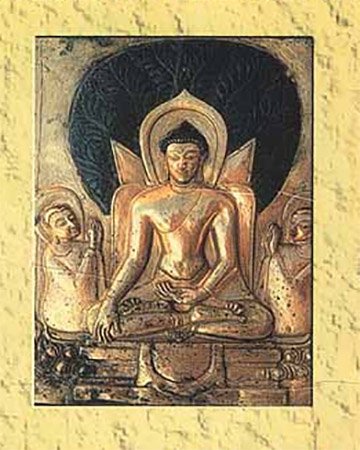The Mahavastu (great story)
by J. J. Jones | 1949 | 502,133 words | ISBN-10: 086013041X
This page describes hell named samjiva which is Chapter II-b of the English translation of the Mahavastu (“great story”), dating to the 2nd-century BC. This work belongs to the Mahasanghika school of early Buddhism and contains narrative stories of the Buddha’s former lives, such as Apadanas, Jatakas and more..
Chapter II-b - The hell named Saṃjīva
As the maturing of what karma are beings reborn there? Those who in this world are enemies and rivals, are vindictive, are haters of their fields, houses or tilth[1], are warring kings, thieves, or soldiers, and those who die nursing hostile thoughts of one another, have rebirth in this hell as the maturing of such karma. But this is no more than the principal cause of rebirth in this hell. Those reborn here reap the fruit of still other wicked and sinful deeds.
As the maturing of what karma are they cut up? Those who in this world have cut up living creatures with knife, axe or hatchet, are themselves cut up as the maturing of such karma.
As the maturing of what karma does the cold wind blow on them? (17) Those who in this world scatter grain as bait for jackals, buffaloes, hogs and wild cocks, saying, “when they are fattened we shall kill them for their flesh,” [are blown upon by the cold wind][2] as the maturing of such karma.[3]
[As the maturing of what karma][4] do nails or rods of iron grow on their hands? Since in this world they have put weapons of war in men’s hands, urging them with these weapons to smite such and such a village, city, town,[5] man, or beast, so, as the maturing of such karma, iron rods and daggers grow on their hands.
Why is this hell called Saṃjīva? To the denizens of this hell the thought occurs, “We shall survive only to experience Kālasūtra.”[6] That is why this hell is called Saṃjīva.
Footnotes and references:
[1]:
[2]:
There are lacunae here, or rather one continuous lacuna.
[3]:
The fitting of the punishment to the crime is suggested, of course, by the similarity of the roots of upavāyati, “blows on,” and nivāpa, “fodder,” “bait,” viz. vā, “to blow” and vap, “to scatter.”
[4]:
There are lacunae here, or rather one continuous lacuna.
[5]:
[6]:
Literally, “Survival (sañjīvaṃ) is existence in Kālasūtra” (Kālasūtrabhūtikaṃ). This is obviously an anomalous way of explaining the meaning of the word. The Commentary at J. 5. 270 explains the name in a very straightforward fashion: nirayapālehi... khaṇḍākhaṇḍikaṃ chinnā nerayikasattā punappuna sañjīvanti ettha’ti Sañjīvo, that is, “though cut to pieces by the warders of hell, the inmates of this hell survive again and again. Hence the name Saṃjīva.” Saṃjīv actually expresses the idea of “reviving” dead persons. Senart translates, “C’est par l’enchaînement ineluctable des destinées que l’on renaît dans le Samjīva. C'est pour cela que cet enfer a reçu le nom de Samjīva.” But this would seem to be an explanation, and a very conjectural one, of the name Kālasūtra, rather than of Saṃjīva,
